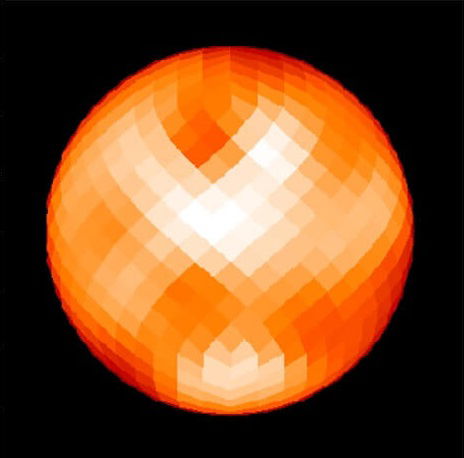
Researchers have uncovered fascinating new details about the North Star, also known as Polaris.
This famous star, which has long been used for navigation, turns out to have a spotted surface, much like our Sun.
Polaris is a special kind of star called a Cepheid variable.
These stars are known for their rhythmic brightening and dimming, which happens as they expand and contract over time.
For Polaris, this cycle lasts about four days.
Cepheid variables are important to astronomers because their brightness is closely tied to their pulsation period.
This relationship allows scientists to use them as “standard candles” to measure distances across space and even to understand how the universe is expanding.
A team of astronomers led by Nancy Evans from the Center for Astrophysics | Harvard & Smithsonian conducted a study to learn more about Polaris.
They used a powerful tool called the CHARA Array, which is a collection of six telescopes located at the Mount Wilson Observatory in California.
These telescopes work together, combining their light to act like a single, much larger telescope. This setup allowed the researchers to get a very detailed look at Polaris and its companion star.
Polaris is not alone in space. It is actually part of a triple-star system, and one of its companions orbits very close to it, completing a full orbit every 30 years.
Because this companion star is faint and so close to the much brighter Polaris, it has been very difficult to observe. However, with the CHARA Array’s advanced technology, the team was able to track this faint star as it moved around Polaris.
Using a special camera called MIRC-X, which was built by astronomers at the University of Michigan and Exeter University in the UK, the team captured detailed images of Polaris.
These images revealed that Polaris is about five times more massive than the Sun and has a diameter 46 times larger.
But the biggest surprise was what they saw on Polaris’s surface. The CHARA images showed that Polaris has large bright and dark spots that change over time. This is the first time anyone has seen the surface of a Cepheid variable star in such detail.
The spots on Polaris are somewhat similar to sunspots on our Sun, and they may be linked to a mysterious 120-day cycle that astronomers have observed in Polaris’s velocity.
Gail Schaefer, the director of the CHARA Array, was excited by the discovery of these spots. The researchers believe that the rotation of the star might be causing these changes, but they plan to continue studying Polaris to understand exactly how these spots form and what they mean for the star’s behavior.
The observations of Polaris were part of the CHARA Array’s open access program, which allows astronomers from around the world to use the facility to study stars and other celestial objects.
This program is supported by the National Science Foundation and Georgia State University.
As scientists continue to study Polaris, we’re likely to learn even more about this iconic star and the secrets it holds. For now, the discovery of its spotted surface is a reminder that even the most familiar stars can surprise us with new and unexpected details.



